“We’re certainly going to have to tweak a few things to generate much more than what we did against them (in the first leg).”
That was the promise from Mikel Arteta before welcoming Porto to the Emirates on Tuesday.
In truth, the bar was not set particularly high from their performance in the Estadio do Dragao last month. For all of their patient passing and dominance on the ball, Arsenal failed to register a single shot on target across 94 minutes of the first leg.
Were those subsequent tweaks successful? A 1-0 victory and the most dramatic of penalty shootout victories ultimately answered Arteta’s rallying cry, but it is worth addressing the consistent tactical theme that emerged across both legs — Arsenal’s toil to overcome Porto’s stubborn defensive block.
Arsenal’s struggles against low-block opposition have been well-documented this season, but Porto’s mid-block appeared to be even more problematic for them.
This was evident from the first minute of the first leg. With Sergio Conceicao’s side setting up in a narrow 4-5-1 (sometimes a 4-1-4-1) out of possession, Porto allowed Arsenal to play in front of them but rarely ever through them. A 41-year-old Pepe commanded those around him from centre-back to keep Porto’s structure akin to an army in formation.
Porto should be commended for the strong display out of possession. Many fans might have thought that a tie against Conceicao’s side was among the easier clashes in the round of 16, but Porto’s performances this season have been built on a strong defensive foundation in all competitions — averaging just 0.68 goals conceded per game in the Primeira Liga, which is comfortably the best defensive record in Portugal.
Nevertheless, Arsenal’s issue was that they rarely did enough to disrupt that block across the two legs.
As early as the first minute of the first leg, Arsenal had the opportunity to plant a seed of doubt in Porto players’ minds with the threat of the ball over the top (black arrow). As you can see below, Leandro Trossard makes an intelligent run between Porto’s centre-backs — which also opened up space between the midfield and defence for Martin Odegaard to receive — but Declan Rice instead elected to turn away and pass backwards to William Saliba.

Backwards and sideways passes were a theme of Arsenal’s evening in Portugal, with their pass network below highlighting just how much they ‘horse-shoed’ around Porto’s stubborn defensive block.
They would happily go around the compact structure but scarcely penetrated it.
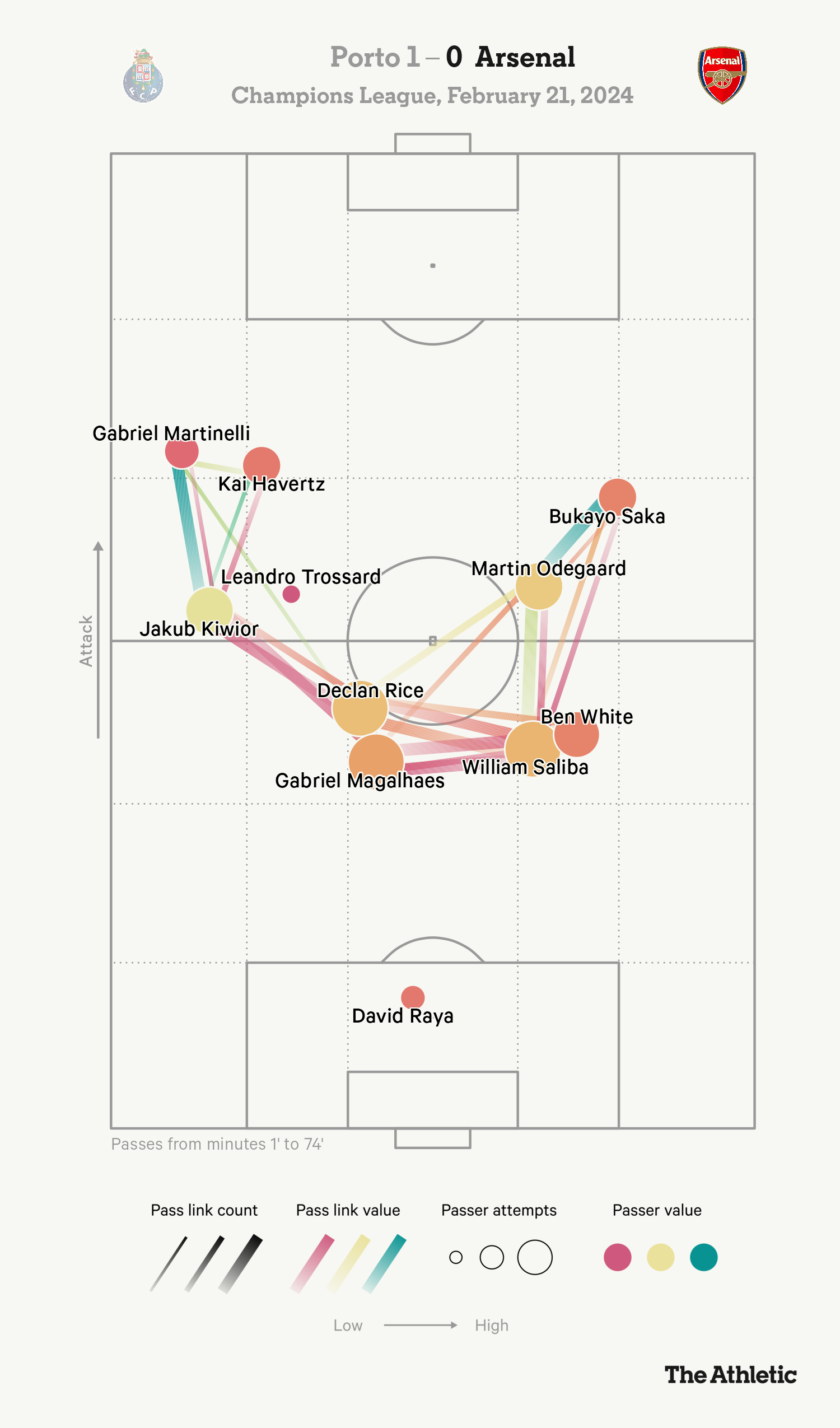
Arsenal’s six switches of play in the first leg were their most in the Champions League this season, highlighting how much they were looking to circulate the ball across the pitch to work an opening — but to little avail.
However, Arsenal’s answer to Porto’s question in the second leg came in the 74th minute of their February encounter — the introduction of Jorginho.
Rice has been an integral part of Arsenal’s success this season, but intricate, incisive passing is not at the top of his CV. When Jorginho stepped into his defensive midfield role in Portugal, he was instantly more likely to play passes that disrupted Porto’s structure.
As you can see below, his initial pass between the lines to Kai Havertz instantly sped up the attack and was the catalyst for an Arsenal opportunity. Rather than play a simple square pass (black arrow), he chose to fire the ball into Havertz, which dragged Porto’s midfielders out of position and created space for the dangerous Martin Odegaard and Bukayo Saka to craft an opportunity and get Porto’s defenders running towards their own goal.
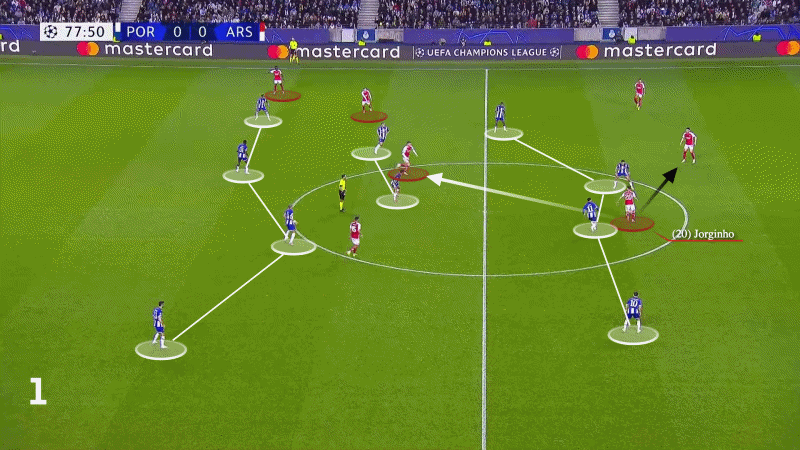
Arteta’s side did show more intent to stretch Porto in Tuesday’s clash, but a similar, frustrating pattern emerged in the early stages.
Ben White’s searching ball turned Porto around in the first minute — a neat contrast to the same minute of the first leg — however, this was easily cut out.
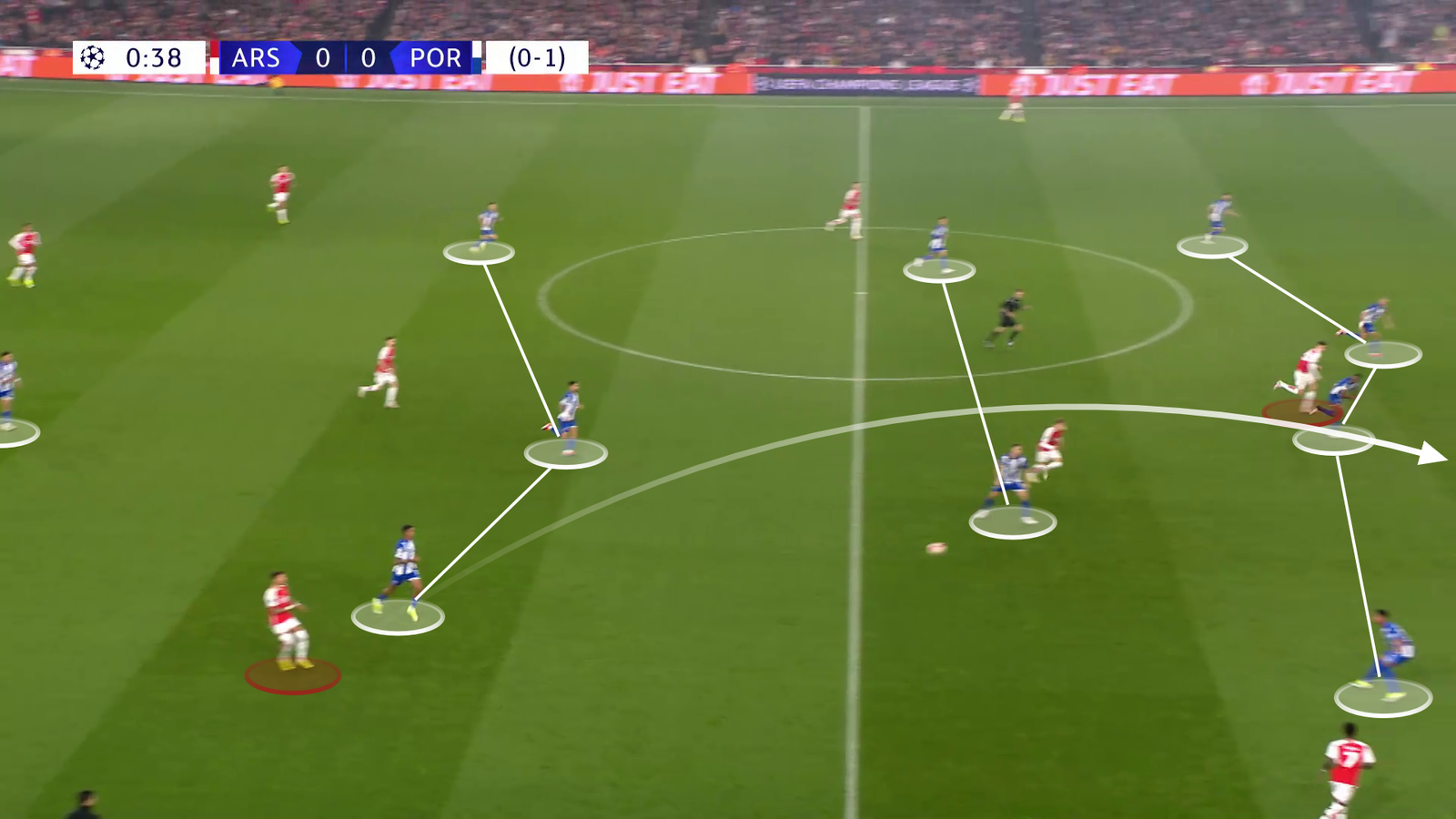
Arsenal’s players tried to come up with different answers to the same question posed by Porto’s defensive unit.
They had tried to go over it.
Then they tried to go around it…
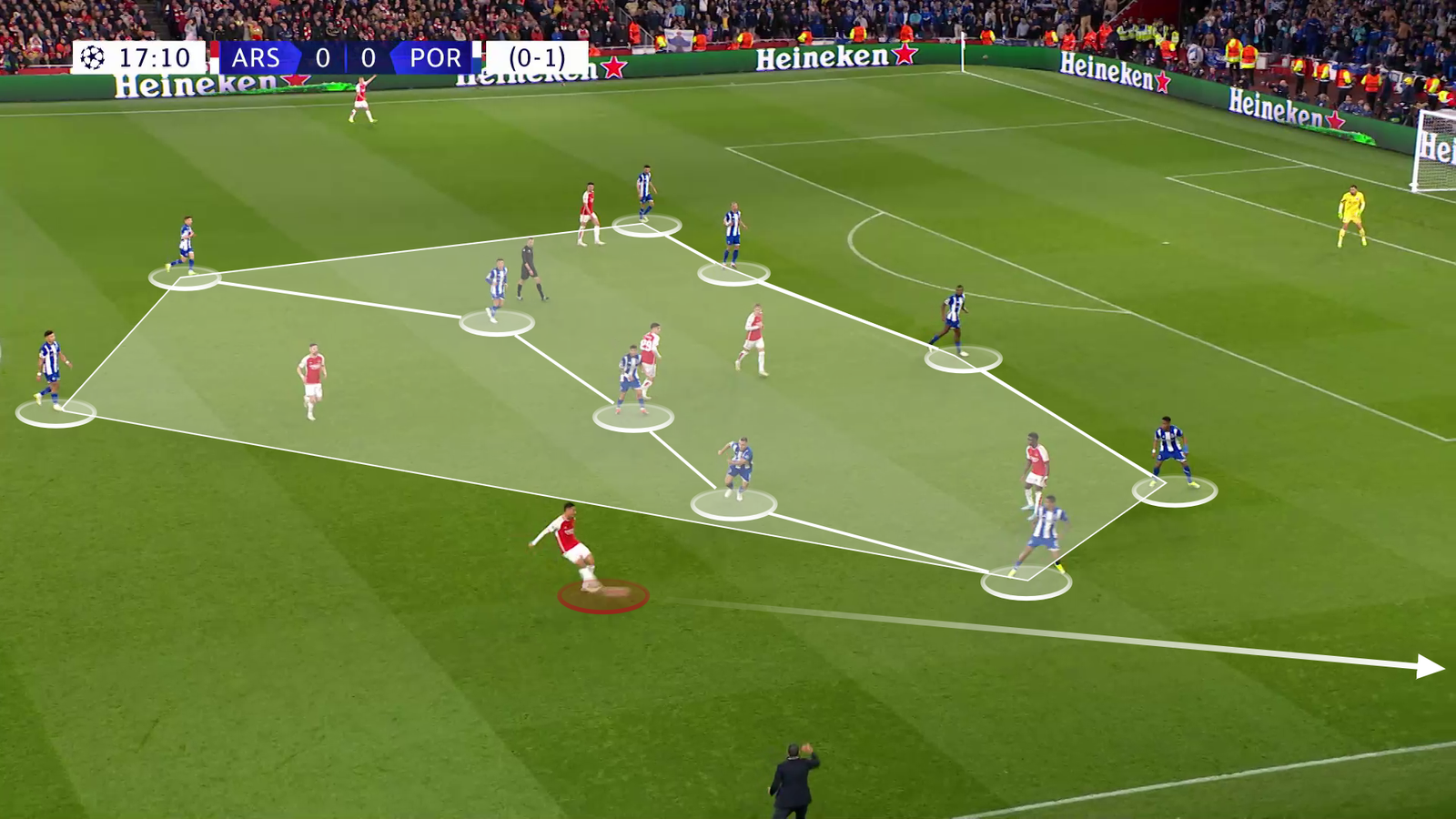
… before Jorginho stepped in once again.
As you can see below, the Italy international is signalling to Havertz and Saka to make more runs when Arsenal’s defenders are on the ball. His gestures are encouraging his team-mates to disrupt Porto’s block by either running in behind…

… or coming short to receive the ball behind Porto’s midfield unit.
If anything, the referee is well-positioned in showing where Arsenal’s forward should be looking to pick up the space — as Jorginho gestures.
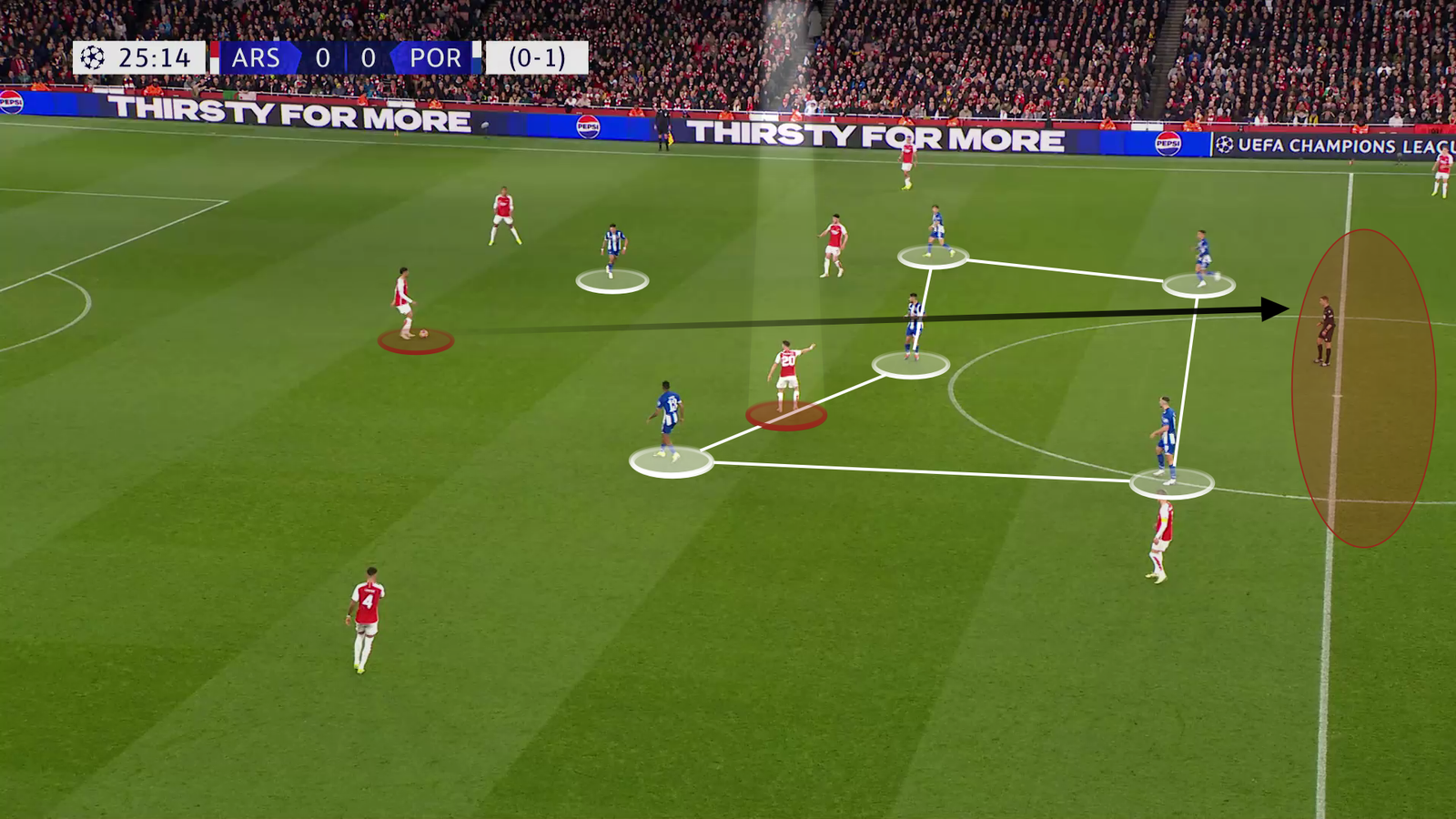
After Jorginho looked to conduct and command Arsenal’s approach off the ball, he soon took it upon himself to do the same on the ball.
As he looked up in the 40th minute, Havertz had answered his call by stretching Porto’s defensive line and making the run in behind.
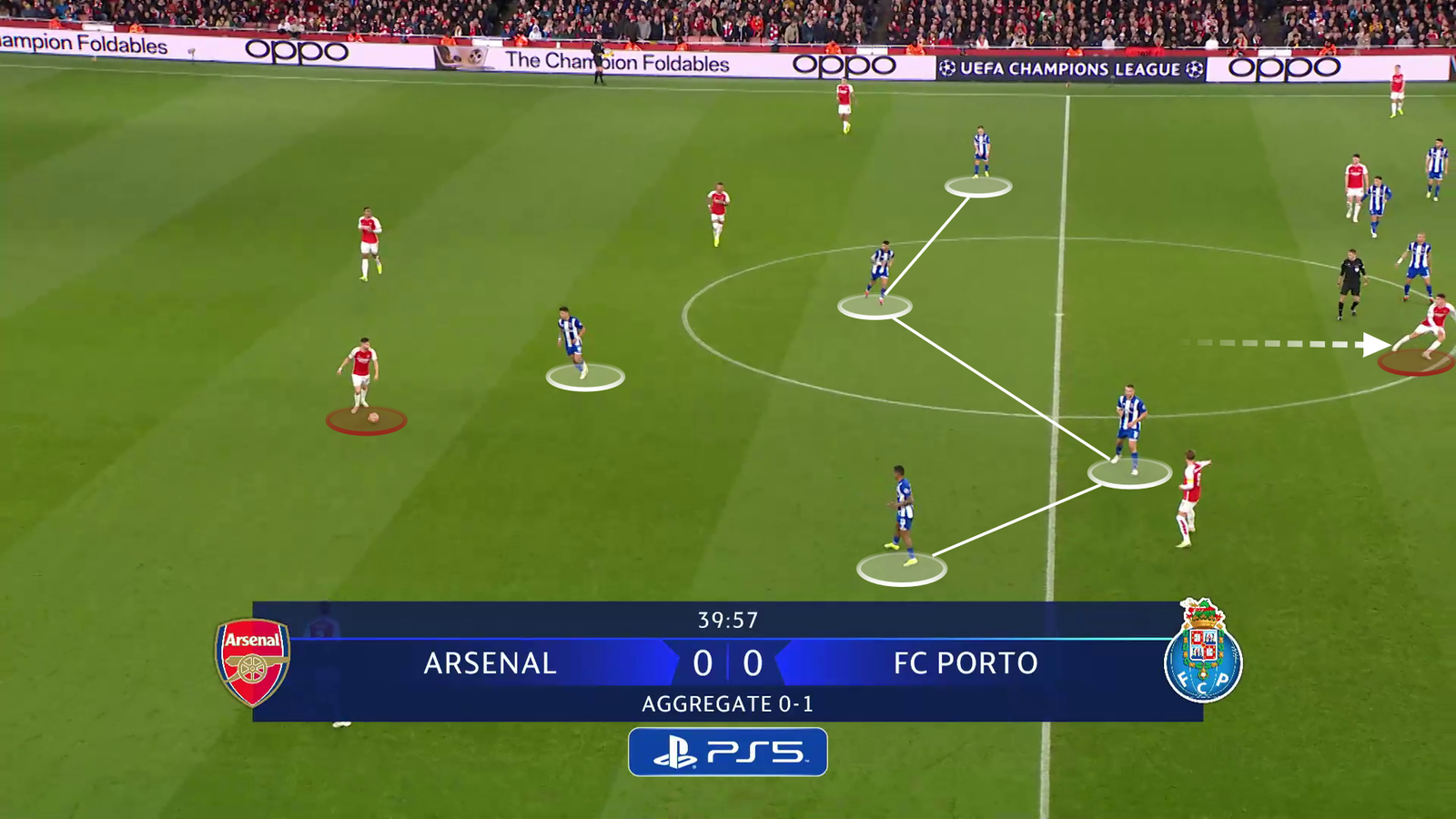
The looped ball over the top was cut out by left-back Wendell, but Porto’s shape was disrupted and gave Arsenal a rare opportunity to exploit a transitional moment.
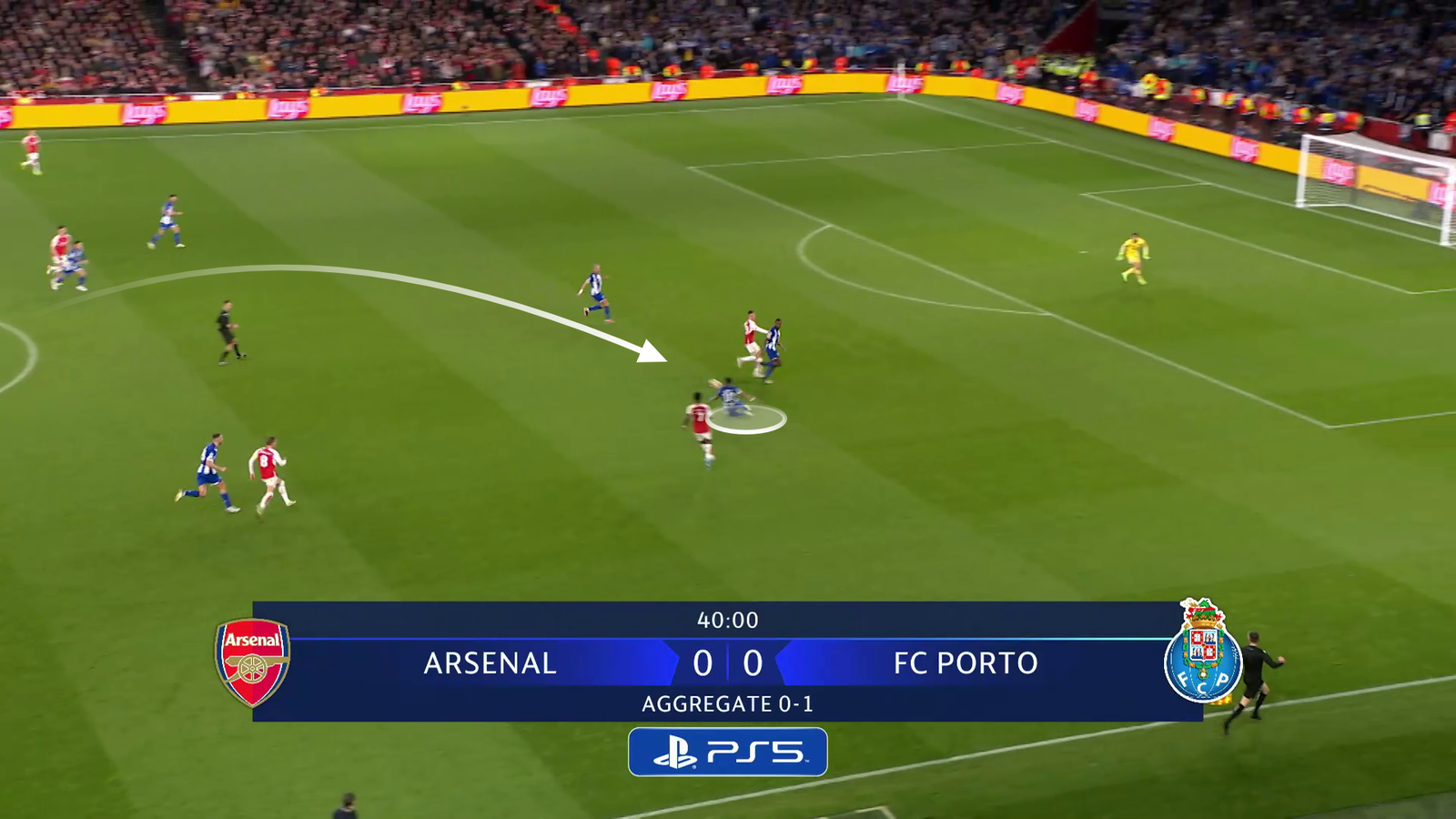
As the ball reaches Trossard on the far side, Odegaard finds himself with space in an advanced area for one of the few times in the whole tie — with Porto’s midfield dropping too deep.
The delightful one-two sees Odegaard’s pass take three Porto players out with a single ball before Trossard expertly finishes. From repeatedly failing to go over or around Porto’s block, Jorginho was once again the catalyst for the disruption.
With Odegaard’s pass, they finally went through it.

The positive spin is that Arsenal did find an answer eventually, with one goal being enough to restore parity in the tie and set up the eventual penalty shootout.
More pragmatically, fans will be well aware that even sterner tests might come if Arsenal are drawn against sides such as Inter Milan or Atletico Madrid (who play tonight) — both sides who provide an equally stubborn defence but with greater attacking potency to punish sides at the other end.
For now, Arsenal can celebrate quarter-final qualification for the first time in 14 years, but the cogs will undoubtedly still be whirring in Arteta’s head after a frustrating pair of games.
Read the full article here


